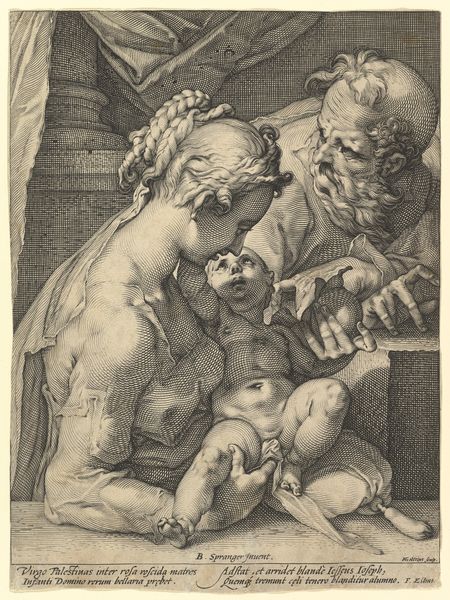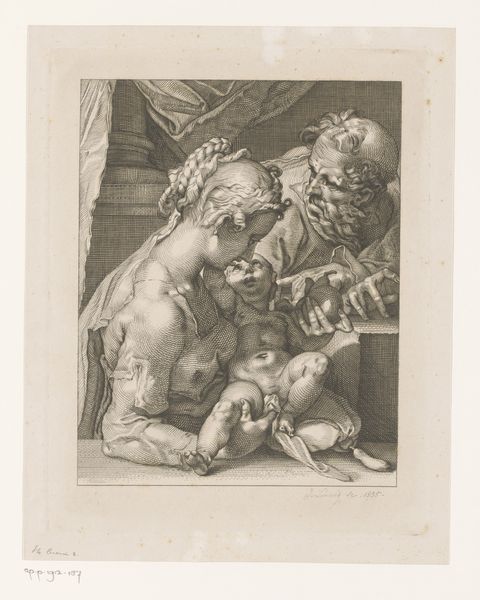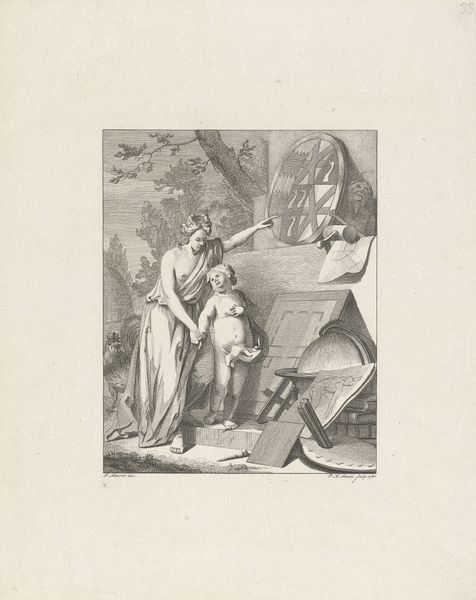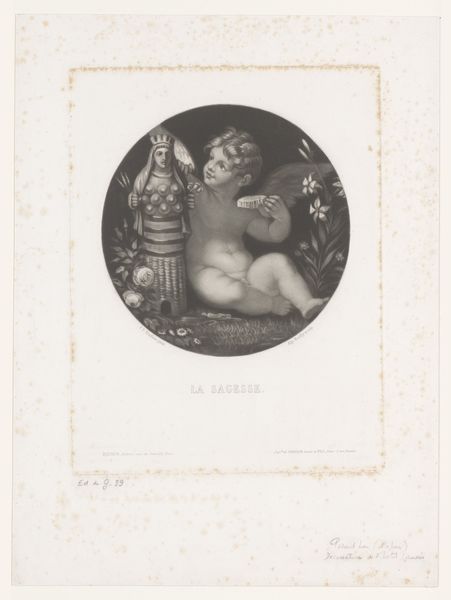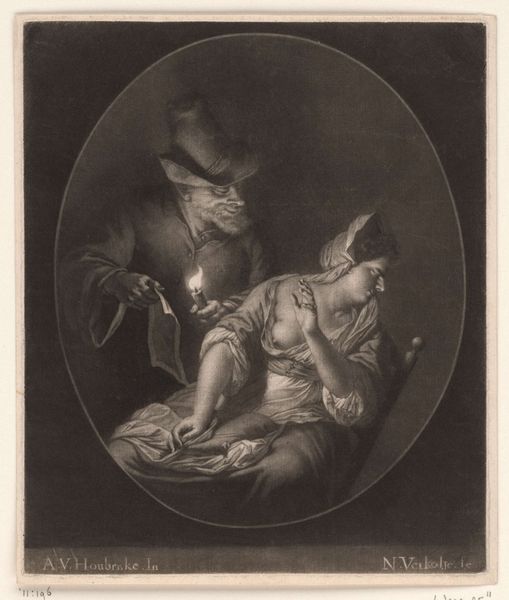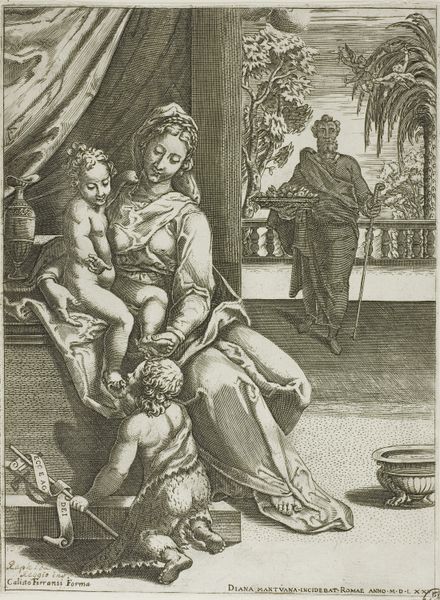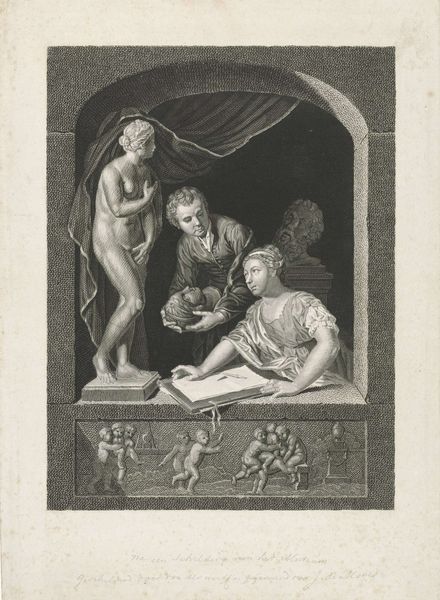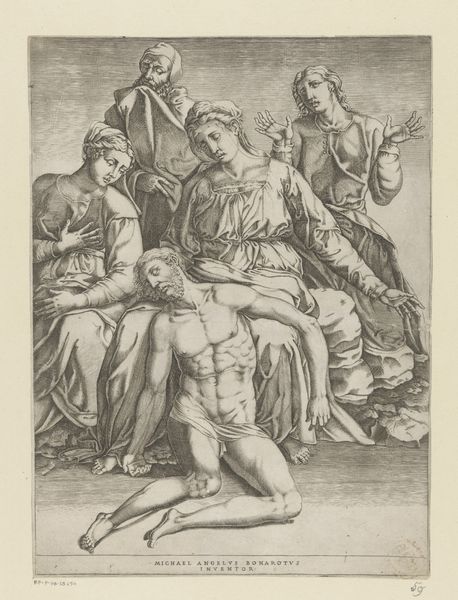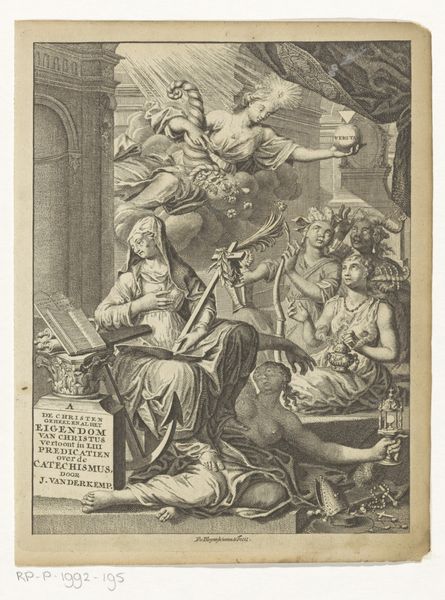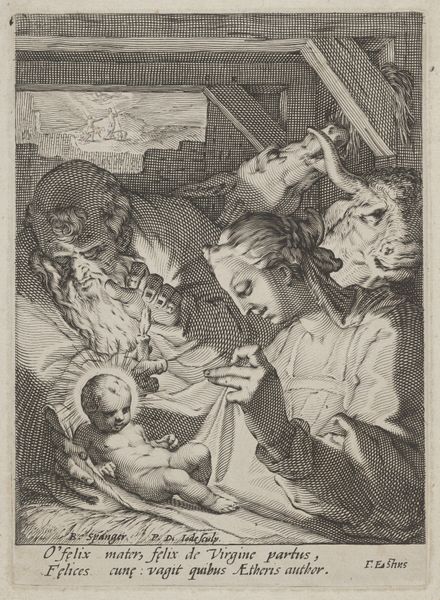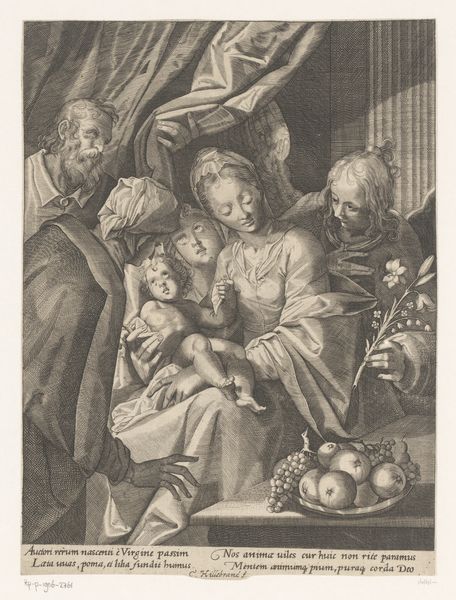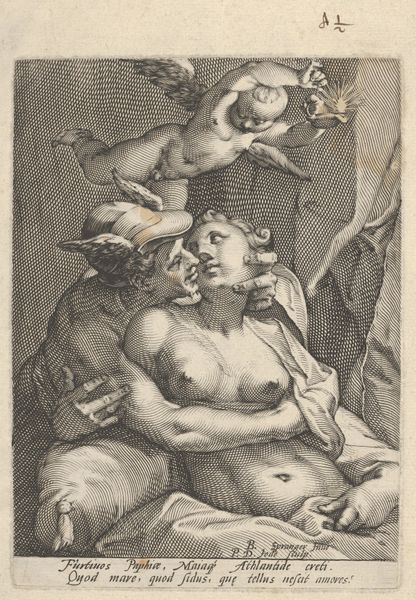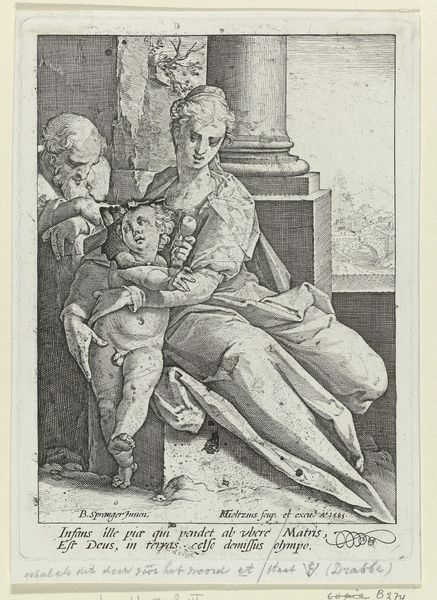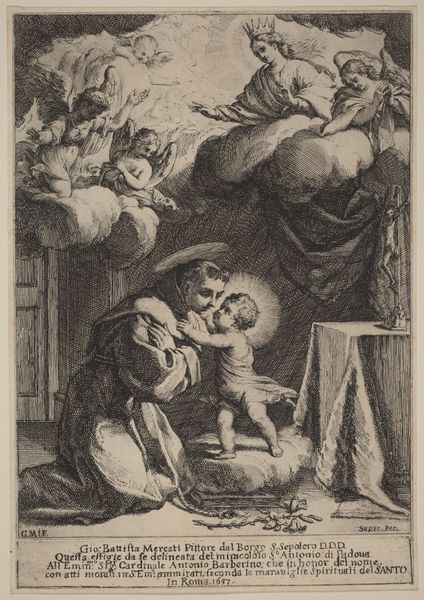
print, engraving
#
portrait
# print
#
mannerism
#
figuration
#
history-painting
#
nude
#
engraving
Dimensions: height 234 mm, width 267 mm
Copyright: Rijks Museum: Open Domain
Editor: So this engraving, "The Holy Family" by Hendrick Goltzius, dates to somewhere between 1585 and 1634. It’s fascinating, almost theatrical with the poses and the detailed lines. What strikes you most about its composition? Curator: I'm drawn to the political dimension inherent in this kind of devotional image. How was the ideal of the family being shaped and projected in this era, particularly through the visual arts and its dissemination via printmaking? Consider the role of the Church, but also wealthy patrons, in promoting certain images of piety and domesticity. What’s being said, and *who* is being addressed through this visual language? Editor: You see a political statement where I saw domesticity. That's so interesting! I was really caught up in how the subjects’ faces lack real personality, the rendering feels stylized… Curator: Right, and that stylization serves a purpose. Think about the conventions of Mannerism and the ways it could be used to signal a certain level of sophistication, of being in the know within a specific cultural milieu. But how does this very ideal become, then, part of a power structure, dictating the terms of representation and defining what is considered beautiful or appropriate? Editor: So the *style* itself is a kind of statement. Almost like gatekeeping through aesthetics? Curator: Exactly! Consider the market for prints like these. Who were the consumers? Were they members of the clergy, wealthy merchants eager to display their piety and cultured tastes? How did the accessibility of prints change the way people related to religious imagery? Editor: Wow, I hadn't thought about it that way at all. It changes how I look at everything, even the fruits in the foreground; now I see it less as just a decorative still life and more as a curated message to a particular audience. Curator: Precisely. It's a dialogue, an exchange within a specific social and political context. Analyzing the print, therefore, becomes an investigation of the values and power structures embedded in its production and reception.
Comments
No comments
Be the first to comment and join the conversation on the ultimate creative platform.
